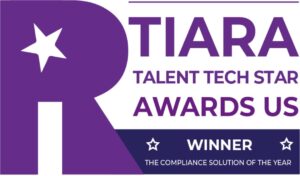Just a few weeks ago, the Omicron variant was sweeping the nation and employers were reviewing COVID-19 workplace policies to ensure the work environment was safe and compliant with Occupational Health and Safety Administration’s (OSHA) Emergency Temporary Standards (ETS) — some were even scrambling. Then, on January 13, 2022 – to the surprise of many – the United States Supreme Court stayed implementation and enforcement of the ETS. Many HR professionals (and businesses) are now left wondering, “What does this mean for me?”
Let’s talk about this and – in particular – what you as an HR professional can relay to members of leadership who may be coming to you for guidance on what to do.
If your organization has been preparing for compliance with the ETS, must you continue to do so? Generally speaking: No, at least for the time-being.
The Supreme Court’s decision directed the Sixth Circuit (a federal appeals court) to consider the viability of the ETS and – until that happens – OSHA cannot implement or enforce the ETS. Even after the Sixth Circuit’s decision, we may find ourselves again waiting for a Supreme Court ruling in the future. Whether or not that will happen is yet to be determined – but given the Supreme Court’s decision (and the light it shed on their position) – implementation and enforcement of the ETS seems unlikely, at least as it is currently written.
Notably, at least one large corporation (Starbucks) has already suspended their vaccine-or-test requirement for U.S. employees – and it’s not a stretch to assume many will follow.
Does the Supreme Court’s ruling mean we are ‘in the clear’? Not necessarily.
There still remains at least a moderate degree of uncertainty about what might happen from here because the ETS may not be the ‘zero-sum game’ it has sometimes been portrayed to be.
Even if the ETS does not gain further traction as it is currently written, it is possible that – in response to the Supreme Court’s decision – OSHA may issue a more limited rule or even different requirements that bring with it a heavier focus on workplace safety standards. State governments may also adopt or increase their COVID-19 vaccination and testing requirements to fill the void they hoped OSHA’s ETS would fill.
So… what should we do? Unfortunately, there isn’t a one-size-fits-all solution to this problem.
Some employers are taking the Supreme Court’s decision in stride and do not plan to take any further action. Many others, who already began taking necessary steps to comply with the ETS, are considering a path of continued compliance or at least some variation of it because they anticipate that the Supreme Court’s ruling will not be the end of this story. Importantly, private employers are still permitted to require that their employees get vaccinated (with the exception of exemptions for reasonable accommodations) in many jurisdictions across the United States.
Regardless of the path you choose, make sure your organization keeps an eye on the news (and this blog!) for changes in the future, and that any decisions you make are in the best interest of your organization and, most importantly, your people.






